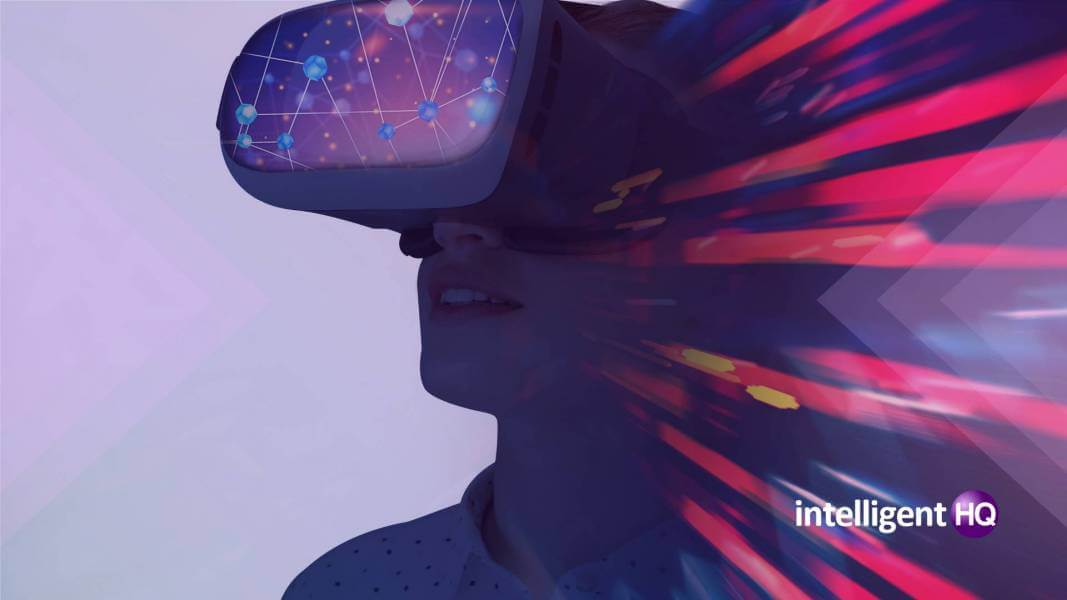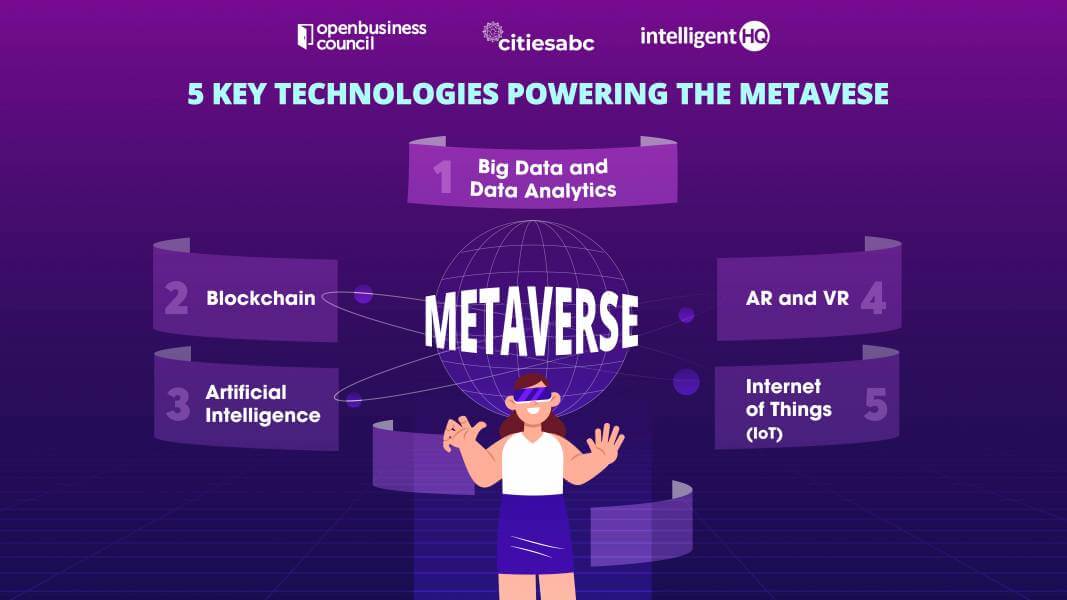Blockchain, IoT, Big Data… All these technologies play a pivotal role in creating the ‘Metaversive’ future. But we are still in the development stage of this breakthrough and the question arises: is all this hullabaloo actually the beginning of a revolution, the so-called Web 3.0, or just a momentary hype?

As the technology evolved, the world transitioned smoothly from wired phones to pagers, mobile phones, and smartphones. Similarly, the paradigm has shifted in almost every sector- fashion, retail, gaming, events, and whatnot. The growing interest in technological advancements is gauging society for a phenomenon called the Metaverse that promises to boost every life experience in unimagined ways.
A vision that defines the next chapter in the evolution of the internet, the Metaverse is an immersive digital world that allows its participants to interact and engage in many different ways. The term has been in flux for the past few years. Still, in its infancy, the concept is evolving with the passing of time.
Hype or the reality of the future, the interest in the metaverse continues to grow over time. From gaming to NFTs, real estate, tourism, and shopping, the metaverse buzzword keeps repeating itself with newer and fancier versions everytime.
With ample business opportunity involved with Metaverse, prevalent names in the market like Qualcomm, Nvidia, Epic, HTC, and Apple are entering the space innovatively. As a motive to expand the ingression of Metaverse in our lives, Microsoft planned the acquisition of ActivisionBlizzard for $69 billion. World-building games like Minecraft and Roblox, events like the Fortnite concerts, and platforms like Enjin and Sandbox- all these are efforts to gear up society for a ‘Metaversive’ future.
The role of technology in empowering the Metaverse business
A clear understanding of driving technologies enriches the quest for the metaverse to be ethically uniform and fair for all. In other words, creating an interoperable space that is accessible equally to everyone could prevent the limitation of the conventional internet space- the dominance of biggies. Now, this quest directs the businesses in an impactful way, aiming for a booming digital economy.
Further, understanding the technology behind the Metaverse also governs the economy of adoption of that technology for the business. For instance, currently, the average cost of an app design in the USA is $48,000, which definitely would increase with its demand. This, therefore, is an imperative parameter to factor in.
What started as a gaming space on the internet has now grown into a massive opportunity for almost every vertical of commerce. The nature of the content, thus, has changed altogether in the vast space. Creating quality content that is immersive for the users would entirely depend on the progress of the technology here.
Here are the five major technologies that are empowering the Metaverse towards a brighter future

Artificial Intelligence
As of late, AI and automation have been broadly applied to our lives. From arranging business procedures to giving out driving instructions, facial recognition, and so on, AI applications include managing operations like anomaly detection, event correlation, and predictive alerting. This can be made even more accurate with the combined use of Big Data and Machine Learning.
Implementation of AI has spread its influence to the formation of vivid metaverses, enhancing user experiences by creating Metaverse assets like buildings, landscapes, avatars, and character routines. AI could be employed to accelerate the software development process. This could be beneficial to creating complex Metaverse assets even when the resources are limited.
AI could also be used for improving efficiency by employing its capabilities to communicate and comprehend the users. Warning, for example, the user to stay alert while performing difficult tasks. This bridges the real-time users closer to the metaverse environments.
Blockchain
A technology built on strong foundations of security and transparency, blockchain provides a decentralised platform that ensures digital collectability, value transfer, governance, interoperability, and convenient accessibility.
Cryptocurrency, the fungible feature of the blockchain, is the primary way to trade for goods and services inside the Metaverse, ensuring no regulations and interventions in transactions. For instance, Decentraland allows the purchase of virtual property using crypto, MANA.
It is also a way to incentivise the users, especially the ones working within the Metaverse. Additionally, Metaverse supports (and enhances) job and business opportunities. This favours the increasing remote working culture across the globe.
AR and VR
Even though Metaverse does not necessarily depend on these two technologies, they offer an enhanced Metaverse experience to the user. While AR utilises digital visual components and characters to integrate the virtual world with the real one, VR provides more immersive features using 3D modelling techniques. Components like optical projection systems, headsets, sensors, gloves, and display systems.
By creating virtual environments, these technologies mimic real-life situations. Meta (formerly Facebook) invested in Oculus quest (VR headsets) to enter their Metaverse. The app can be accessed using smartphones and does not require a computer system.
“Augmented reality will change the world more than a lot of other technologies. Travelling around to meet people will be much less important when you can stand in a room and chat with a virtual representation of a person that’s so close to reality – it’ll be a whole new level.” –Tim Sweeney, CEO and Co-Founder Epic Games.
The harmonious relationship between AR and VR has successfully created an early model for the Metaverse. With the expansion of technology, a more interactive and experiential Metaverse environment will evolve.
Internet of Things (IoT)
IoT enabled devices can help solve some of the real-world problems effectively in the metaverse. This gives an opportunity to accurately integrate the complex systems over the existing framework of technology. For instance, enhancing the user experience by using the 3D user interface over mobile phones and computers, customised as per users’ interests and preferences.
Thus, IoT can bridge the real world with that of the internet, using sensors and devices as the connecting link. These devices have the capacity to send or collect data naturally. Indoor regulators, clinical devices, facial recognition, voice-actuated speakers, thermostats, and many others provide a wider scope of information. The data, thus, collected would enhance the precision for an advanced representation, for example, altering the function of Metaverse collectibles based on current weather conditions. This ensures a better immersive nature of the space.
Big Data and Data Analytics
Even when data science technologies do not contribute to the development of the Metaverse, the data science process definitely will. Data processes like analytics could be helpful in managing Metaverse-based events, like building a 3D avatar, or a virtual stage. Similarly, data collected (like current trends and events) could be used to forecast using predictive analysis tools and also for decision making.
The “Metaversive” future
Rapid enhancement in technology over the past few decades has manifested the notion that nothing is impossible, even the 3D virtual Universe popularly known as the Metaverse.
“The technology will be so good it will be very hard for people to watch or consume something that has not in some sense been tailored for them.” -Eric Schmidt, Google Chairman.
It is not hard to imagine a highly interactive and interoperable space where the users have immense freedom to get immersed in it. Still, in the very early stages, it is hard to predict the development materialises or the impact it will have on society as a whole. As of now, the audience is yet to witness how this realm unfolds itself for its users.

Founder Dinis Guarda
IntelligentHQ Your New Business Network.
IntelligentHQ is a Business network and an expert source for finance, capital markets and intelligence for thousands of global business professionals, startups, and companies.
We exist at the point of intersection between technology, social media, finance and innovation.
IntelligentHQ leverages innovation and scale of social digital technology, analytics, news, and distribution to create an unparalleled, full digital medium and social business networks spectrum.
IntelligentHQ is working hard, to become a trusted, and indispensable source of business news and analytics, within financial services and its associated supply chains and ecosystems












